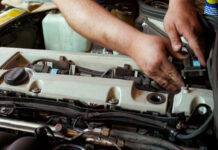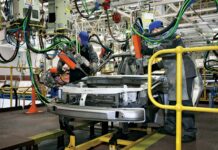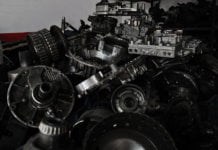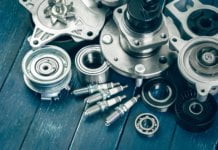The commercial vehicle industry is evolving at a rapid pace. As trucks, HGVs and buses become more advanced, so too do the tools and techniques required to maintain them. Today’s heavy-duty vehicles are equipped with a host of electronic systems, sensors, and control units that make them more efficient, safer, and cleaner. But this also means that the role of the mechanic has changed dramatically – moving far beyond spanners and grease to include laptops, diagnostic equipment, and specialist software.
In this article, we explore the latest developments in vehicle maintenance and look at how technology is now central to diagnosing, repairing, and optimising the performance of HGVs and trucks.
The Shift Towards Technology in Vehicle Maintenance
Not long ago, truck maintenance was largely mechanical. Identifying faults involved experience, intuition, and plenty of time under the bonnet. However, as vehicle manufacturers introduced more electronics and stricter emissions standards, maintenance tasks became more complex.
Modern HGVs are essentially rolling computers. They rely on networks of Electronic Control Units (ECUs) that govern everything from engine performance and braking to emissions, steering and suspension. When something goes wrong, these systems generate fault codes and store detailed diagnostic data.
For today’s workshop, this data is gold – but it requires the right tools to access and interpret it. This is where advanced diagnostic technology comes in.
Diagnostic Systems: A Mechanic’s Most Powerful Tool
Diagnostic tools for HGVs and trucks are now indispensable. These are specialised devices, usually in the form of rugged tablets or laptops with dedicated software, that connect directly to the vehicle’s onboard systems via the diagnostic port (commonly OBD or manufacturer-specific connectors).
Here are some of the key ways that diagnostic systems are used in workshops today:
1. Fault Diagnosis
When a truck experiences a problem, the vehicle’s ECU will often log a fault code – sometimes illuminating a warning light on the dashboard. Diagnostic tools can read these codes, pinpointing the affected system and often suggesting the likely cause. This dramatically reduces the time spent finding faults, particularly with complex issues that may not be obvious through physical inspection.
For example, mechanics can quickly detect issues with:
- Engine management
- ABS/EBS braking systems
- AdBlue and exhaust aftertreatment (SCR, DPF)
- Automatic transmissions
- Air suspension
- Electronic steering and safety systems
Without these tools, finding an intermittent fault in, say, the NOx sensor or CAN-bus wiring would be a daunting, time-consuming task.
2. Assisting with Repairs
Diagnostics do more than just identify faults – they also guide mechanics through the repair process. Many modern diagnostic platforms include step-by-step troubleshooting guides, wiring diagrams, and component test procedures.
Some systems can even activate components (known as “actuations”) during testing. For example, a mechanic can command the EGR valve to open or the fuel pump to run in order to observe its operation in real time.
3. Monitoring Performance
Beyond fault-finding, diagnostic tools are increasingly used for performance monitoring and preventative maintenance. Mechanics and fleet managers can access live data streams from the vehicle while it runs, measuring parameters such as fuel consumption, boost pressure, exhaust temperatures, and brake wear.
Monitoring these trends over time helps to identify components that are degrading before they fail, supporting predictive maintenance strategies that reduce unplanned downtime and save costs.
4. Calibration and Resetting
One of the most critical functions of diagnostic equipment today is calibration. After certain repairs or component replacements, systems need to be recalibrated to ensure they function correctly. This is particularly common in trucks equipped with advanced driver assistance systems (ADAS), which rely on cameras and radar sensors that must be precisely aligned.
Common calibration and reset tasks include:
- Recalibrating the AdBlue system after SCR repairs
- Resetting service indicators
- Calibrating air suspension levels
- Programming new ECUs or sensors
- Adjusting brake balance after component replacement
Without the right diagnostic tools, these procedures simply can’t be performed properly.
The Benefits of Advanced Diagnostics
Investing in modern diagnostic technology brings several benefits for workshops and fleets:
- Faster turnaround: Quicker fault finding and repairs mean reduced vehicle downtime.
- Improved accuracy: Technicians can target the actual problem rather than replacing parts unnecessarily.
- Better customer service: Clear reports and data build confidence with customers.
- Compliance: Tools help ensure repairs meet regulatory and emissions standards.
- Future readiness: As vehicles become even more sophisticated, staying up-to-date with diagnostic technology ensures workshops remain competitive.
Looking Ahead
As HGVs continue to incorporate more electric and hybrid systems, telematics, and automation, the importance of truck diagnostics will only grow. Remote diagnostics, cloud-based platforms, and over-the-air updates are already starting to appear in some fleets – allowing some issues to be diagnosed and even fixed without the vehicle visiting the workshop.
For mechanics, this means ongoing training and investment in the latest tools and software is essential. The skillset of a modern truck technician is increasingly a blend of mechanical expertise and digital know-how.
Conclusion
The days of relying solely on spanners and intuition are over. Today’s HGV maintenance demands advanced technology and skilled technicians who can harness it. Diagnostics are now central to the job – helping mechanics diagnose problems accurately, support efficient repairs, monitor vehicle performance, and carry out precise calibrations.
For workshops and fleet operators, embracing these developments is not just a matter of keeping up – it’s about improving reliability, reducing costs, and ensuring that vehicles stay on the road, safely and efficiently.



























